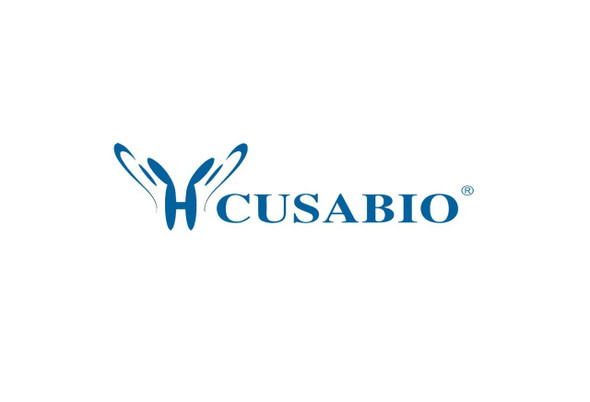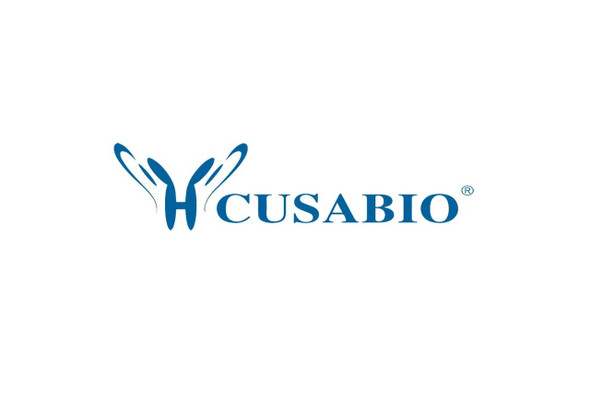Cusabio Mouse Recombinants
Recombinant Mouse DNA-dependent protein kinase catalytic subunit (Prkdc), partial | CSB-EP018714MO
- SKU:
- CSB-EP018714MO
- Availability:
- 13 - 23 Working Days
Description
Recombinant Mouse DNA-dependent protein kinase catalytic subunit (Prkdc), partial | CSB-EP018714MO | Cusabio
Alternative Name(s): p460
Gene Names: Prkdc
Research Areas: Others
Organism: Mus musculus (Mouse)
AA Sequence: EYPFLVKGGEDLRQDQRIEQIFEVMNAILSQDAACSQRNMQLRTYRVVPMTSRLGLIEWIENTMTLKDLLLSNMSQEEKVANNSDPKAPIRDYKDWLMKVSGKSDAGAYVLMYSRANRTETVVAFRRRESQVPPDLLKRAFVKMSTSPEAFLALRSHFASSHALLCISHWLLGIGDRHLNNFMVAMETGSVIGIDFGHAFGSATQFLPVPELMPFRLTRQFVSLMLPMKETGLMCTVMVHALRAFRSCAGLLTDTMEIFVKEPSFDWKS
Source: E.coli
Tag Info: N-terminal 6xHis-tagged
Expression Region: 3747-4015aa
Sequence Info: Partial
MW: 34.6 kDa
Purity: Greater than 90% as determined by SDS-PAGE.
Relevance: Serine/threonine-protein kinase that acts as a molecular sensor for DNA damage. Involved in DNA non-homologous end joining (NHEJ) required for double-strand break (DSB) repair and V(D)J recombination. Must be bound to DNA to express its catalytic properties. Promotes processing of hairpin DNA structures in V(D)J recombination by activation of the hairpin endonuclease artis (DCLRE1C). The assbly of the DNA-PK complex at DNA ends is also required for the NHEJ ligation step. Required to protect and align broken ends of DNA. May also act as a scaffold protein to aid the localization of DNA repair proteins to the site of damage. Found at the ends of chromosomes, suggesting a further role in the maintenance of telomeric stability and the prevention of chromosomal end fusion. Also involved in modulation of transcription. Recognizes the substrate consensus sequence [ST]-Q. Phosphorylates 'Ser-139' of histone variant H2AX/H2AFX, thereby regulating DNA damage response mechanism. Phosphorylates DCLRE1C, C1D, c-Abl/ABL1, histone H1, HSPCA, c-jun/JUN, p53/TP53, PARP1, POU2F1, DHX9, SRF, XRCC1, XRCC4, XRCC5, XRCC6, WRN, MYC and RFA2. Can phosphorylate C1D not only in the presence of linear DNA but also in the presence of supercoiled DNA. Ability to phosphorylate p53/TP53 in the presence of supercoiled DNA is dependent on C1D. Contributes to the determination of the circadian period length by antagonizing phosphorylation of CRY1 'Ser-588' and increasing CRY1 protein stability, most likely through an indirect machanism.
Reference: Phosphorylation of the cryptochrome 1 C-terminal tail regulates circadian period length.Gao P., Yoo S.H., Lee K.J., Rosensweig C., Takahashi J.S., Chen B.P., Green C.B.J. Biol. Chem. 288:35277-35286(2013)
Storage: The shelf life is related to many factors, storage state, buffer ingredients, storage temperature and the stability of the protein itself. Generally, the shelf life of liquid form is 6 months at -20?/-80?. The shelf life of lyophilized form is 12 months at -20?/-80?.
Notes: Repeated freezing and thawing is not recommended. Store working aliquots at 4? for up to one week.
Function: Serine/threonine-protein kinase that acts as a molecular sensor for DNA damage. Involved in DNA non-homologous end joining (NHEJ) required for double-strand break (DSB) repair and V(D)J recombination. Must be bound to DNA to express its catalytic properties. Promotes processing of hairpin DNA structures in V(D)J recombination by activation of the hairpin endonuclease artemis (DCLRE1C). The assembly of the DNA-PK complex at DNA ends is also required for the NHEJ ligation step. Required to protect and align broken ends of DNA. May also act as a scaffold protein to aid the localization of DNA repair proteins to the site of damage. Found at the ends of chromosomes, suggesting a further role in the maintenance of telomeric stability and the prevention of chromosomal end fusion. Also involved in modulation of transcription. Recognizes the substrate consensus sequence [ST]-Q. Phosphorylates 'Ser-139' of histone variant H2AX/H2AFX, thereby regulating DNA damage response mechanism. Phosphorylates DCLRE1C, C1D, c-Abl/ABL1, histone H1, HSPCA, c-jun/JUN, p53/TP53, PARP1, POU2F1, DHX9, SRF, XRCC1, XRCC4, XRCC5, XRCC6, WRN, MYC and RFA2. Can phosphorylate C1D not only in the presence of linear DNA but also in the presence of supercoiled DNA. Ability to phosphorylate p53/TP53 in the presence of supercoiled DNA is dependent on C1D. Contributes to the determination of the circadian period length by antagonizing phosphorylation of CRY1 'Ser-588' and increasing CRY1 protein stability, most likely through an indirect mechanism. Plays a role in the regulation of DNA virus-mediated innate immune response by assembling into the HDP-RNP complex, a complex that serves as a platform for IRF3 phosphorylation and subsequent innate immune response activation through the cGAS-STING pathway (By similarity).
Involvement in disease: Defects in Prkdc are the cause of severe combined immune deficiency (SCID) which is characterized by a lack of mature functional lymphocytes and a high susceptibility to lethal opportunistic infections if not chronically treated with antibiotics. The lack of B- and T-cell immunity resembles severe combined immunodeficiency syndrome in human infants.
Subcellular Location: Nucleus, Nucleus, nucleolus
Protein Families: PI3/PI4-kinase family
Tissue Specificity:
Paythway:
Form: Liquid or Lyophilized powder
Buffer: If the delivery form is liquid, the default storage buffer is Tris/PBS-based buffer, 5%-50% glycerol. If the delivery form is lyophilized powder, the buffer before lyophilization is Tris/PBS-based buffer, 6% Trehalose, pH 8.0.
Reconstitution: We recommend that this vial be briefly centrifuged prior to opening to bring the contents to the bottom. Please reconstitute protein in deionized sterile water to a concentration of 0.1-1.0 mg/mL.We recommend to add 5-50% of glycerol (final concentration) and aliquot for long-term storage at -20?/-80?. Our default final concentration of glycerol is 50%. Customers could use it as reference.
Uniprot ID: P97313
HGNC Database Link: N/A
UniGene Database Link: UniGene
KEGG Database Link: KEGG
STRING Database Link: STRING
OMIM Database Link: N/A









